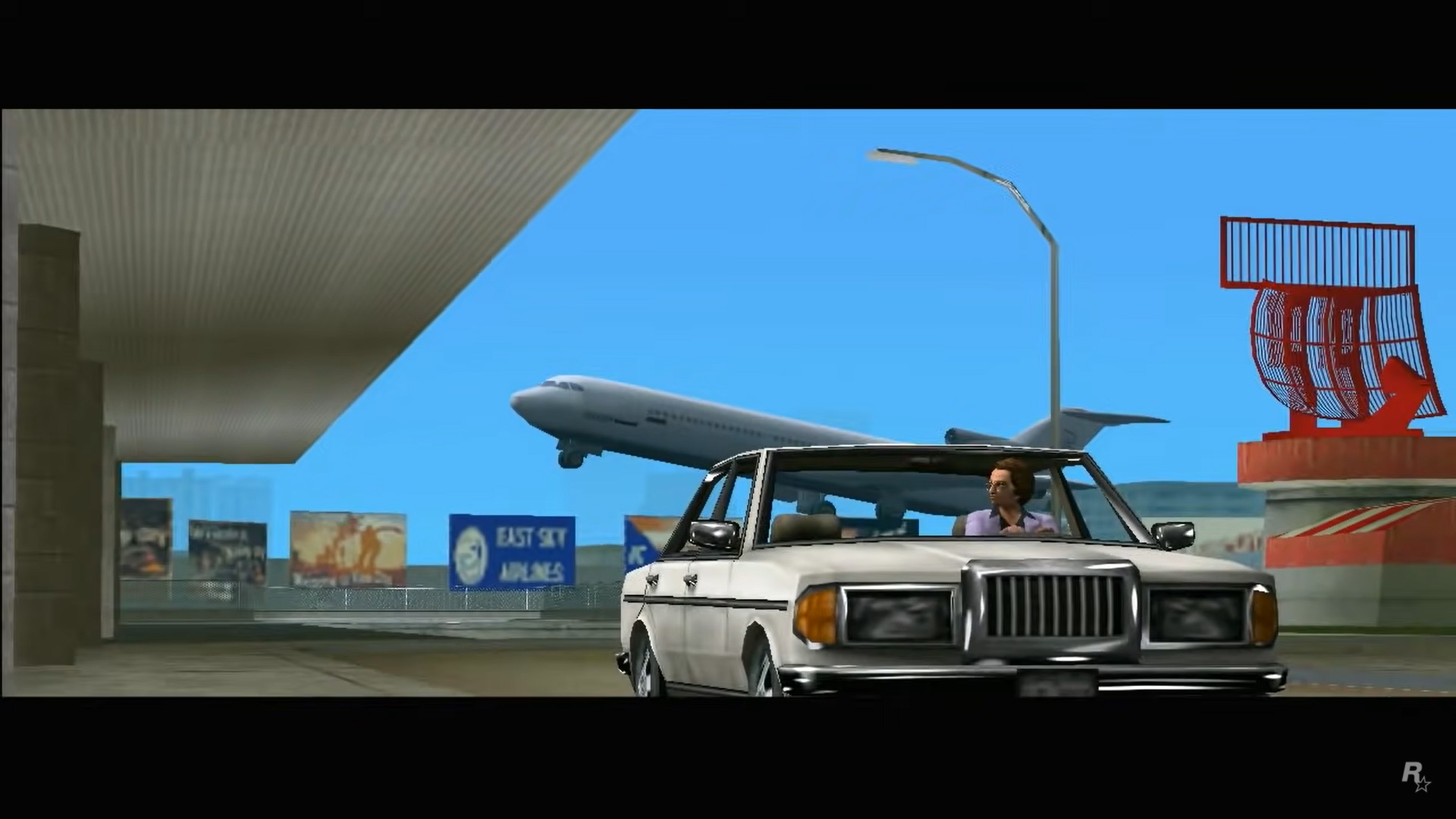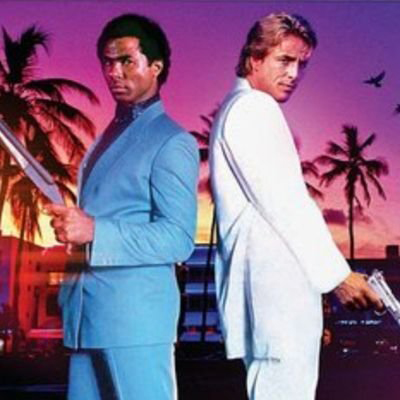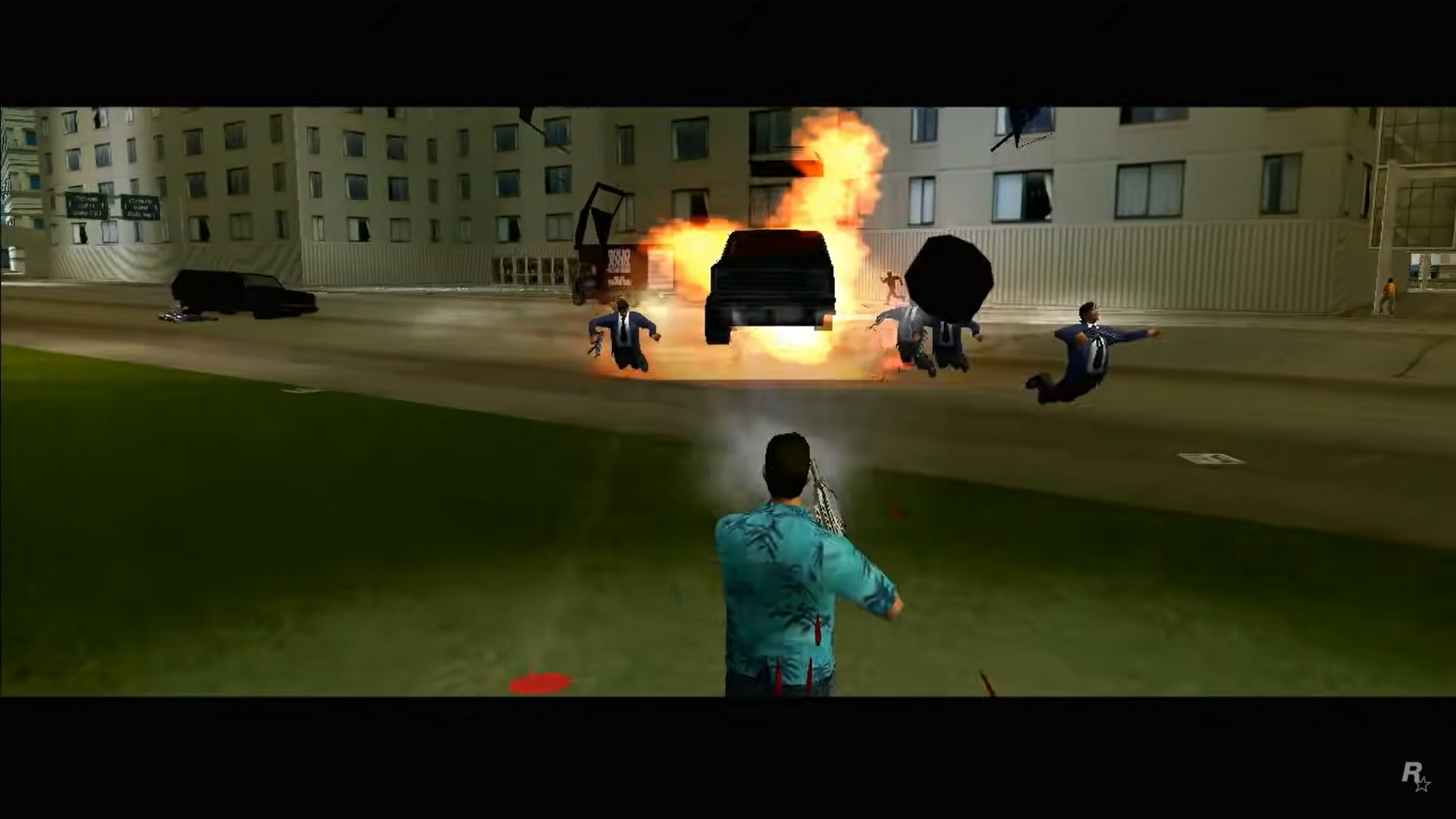20 years later, ‘GTA: Vice City’ is still the pinnacle of open-world games
You can’t mention the Grand Theft Auto franchise without controversy in the same sentence. The ability to wreak havoc as a player to everything that moves, from law enforcement to unsuspecting citizens, is probably a cathartic experience for some, but a horror show for others.
As perspectives clash, one thing’s for sure, Grand Theft Auto: Vice City (2002) unapologetically continued the core gameplay while taking the series to new heights in style.
Although it bore the same marks as its predecessors through gratuitous violence, it rid of the formulaic approach; resulting in the charismatic world of Vice City: a fictional take on the sunny beaches of Miami, Florida, against the backdrop of crime syndicates, lawlessness, and the bustling era of 1980s music. All of which remains, arguably, definitive evidence of how a video game turns into a period piece.
Reveling in the energy of the 1980s, the colorful suits, the neon-clad moist pavement drenched from building reflections make Vice City oozing with personality. And for the most part, imbibed memories of the era—for players who were a decade removed from that period—feel nostalgic in their time spent in a cyber-version of Miami.

The open world of Vice City presented an action-adventure sandbox game, enveloped by an overarching crime drama reminiscent of 1980s mobster flicks, showered with the vibrant styling of the decade. It offered limitless potential to the player, provided you don’t plan to do any kind of swimming.
The gnarly story
Series developer Rockstar Games have always incorporated history in their open-world games to impart that aura of authenticity to the narrative, usually as the basis for its satirical take on society appropriate of the era.
Often compared as a modern retelling of Brian De Palma’s Scarface (1983), you control Tommy Vercetti, voiced by the remarkable Ray Liotta, in his bid as a member of Sonny Forelli’s crime family in establishing a hold of the drug trade in Vice City.

Fresh off prison after serving a 15-year sentence for murder, Vercetti was set to secure an underground deal in the city, only to be ambushed by an unknown group of assailants at the drop-off. It’s up to him to find the people responsible for the sabotage, and bring them to justice… well, sort of. This is a crime drama after all.
Its influences permeated throughout the game, from similar sounding names of Tommy and Tony Montana, Al Pacino’s character in De Palma’s classic, both of whom even sport the same iconic Hawaiian shirt.

While clear nods to Scarface are present, its distinct sense of style and aesthetic derived from series creator Sam Houser’s love for the dynamic duo of James Crockett and Ricardo Tubbs on Miami Vice (1984). Portrayed by Don Johnson and Philip Michael Thomas, the latter voiced Lance Vance, the right-hand man of Vercetti in the game.
Along the way, Tommy meets an ensemble of memorable characters: Lance Vance, the one who helped in the deal between the Forellis in Vice City who had his brother killed in the ambush; Ricardo Diaz, the drug kingpin of Vice City, subsequently employing Tommy and Lance to his crew; as well as Colonel Juan Cortez, a prominent personality in the city who arranged the initial meet up.
Another notable one is Avery Carrington, a Texan real estate mogul played by the late Burt Reynolds.
Nods to Scarface’s are there, as well as Miami Vice, and to some extent, Carlito’s Way (1993), another crime fiction by De Palma and Pacino, but series creators Dan and Sam Houser later revealed they wanted to focus on the creation of a criminal empire over a plot-driven story about vengeance.
Vice City set itself apart by having a fully realized set of characters, more importantly, Tommy in the lead role as the first non-silent protagonist in the entire franchise. Eventually avoiding “sequelitis”—the phenomenon in pop culture associated with follow-ups of famous movies, books, and game franchises suffering from a decrease in quality—it surpassed expectations from the equally successful title and predecessor Grand Theft Auto: III that brought the series into the modern 3D graphics era.
A cult of personality
Capturing a reimagination of a particular time requires a meticulous cumulative process of artful worldbuilding combined with tinges of historical fiction to evoke a fondness of the past.
GTA: Vice City was able to do that by creating a version of Miami in the 1980s by adding another layer of immersion, tapping the senses through its music. Whether it’s an affectation or valid criticism, Vice City has one of the most memorable collections of carefully curated soundtracks true to the period it’s representing.
A generation of players probably bonded with their older siblings and parents just by sifting through the outstanding setlist of Vice City via its in-game radio stations. I am guilty myself of taking the scenic route far too often to an objective only to finish listening to Foreigner’s Waiting for a Girl Like You. Pretty much anything on Emotion 98.3 should be an entire genre in and of itself.
Before Brooklyn detectives Jake Peralta and Charles Boyle bopped their heads to All Night Long in the Season 4 episode “The Night Shift,” resident gamers from Vice City were already cruising along Vice Point with the Mary Jane Girls blasting through the radio.
It’s always a bummer, however, whenever you’re on a motorcycle, and a non-player character (NPC) suddenly cuts you on the freeway, causing you to crash and kiss the pavement.
Ah, the heyday of my fake memories of 1980s America.

Another draw of the game is possibly the fascination with Mafia families in America, presented as the organization’s high point of relevance in its history taking place in the ’80s.
The organized crime syndicate is often romanticized under the notion of men and their determination as a disenfranchised group to fight authority and those in power. It’s probably the reasoning behind the glamorization of the yakuza or gokudō, a legal transnational organized crime syndicate in Japan, as Robin Hood-like figures of honor who live by the rigidity of their code, for better or worse.
Nevertheless, the 1980s saw a rise in popularity in the depiction of the American Mafia, a separate entity from the ones rooted in Sicily, Italy. The latter of which owed its origins to early foreign rulers as far back as the Phoenicians. History as far back as that, however, can be a story for another day.
The strengthening crackdown of the United States Government in the domestic presence of Mafia families enabled the public for the first time to have an inside look on how these organizations operated. By employing stronger anti-racketeering laws, law enforcement was able to nab high ranking officials in the Mafia.
The most shocking perhaps is how some Mafiosi came forward, breaking one of the organization’s strictest codes known as the omertà, or the Southern Italian code of silence in the face of authorities; probably to avoid even longer prison sentences.
A realistically fake nostalgia
Violence in video games is always a subject for debate. As it is a medium that not only depicts it, but possesses the ability to offer interaction to its players.
The first game, Grand Theft Auto, developed by Scotland-based company, DMA Design (now Rockstar North), sent shockwaves when it was released back in November 1997. The top-down action-adventure game rewarded players for committing crimes in a heavily populated fictional city to rise through the ranks and gain the favor of local crime syndicates.
GTA: Vice City brought an entire decade to a new generation. The game did everything right. It’s outrageously fun, the map is not bloated, and the amazing soundtrack perfectly captures the spirit of the electropop music scene.
It received media backlash because of the intentional campaign of the company to market the game as a “crime simulator” where everything goes. Along with publicity, the franchise garnered the attention of groups protesting how violence in video games encourages it in real life.
Fast forward a few years later, Vice City also faced the same controversies. The difference in five years since the first entry to the series was how quickly the industry made its case for the medium’s relevance as a viable piece of entertainment. It now differs from the brutish gore that Doom (1993) had, nor the tasteless and problematic premise of Night Trap (1992).

The production value alone displayed high quality, as with the celebrities lending their voices to the game. Paying homage to a decade through cultural representations with the underlying nihilistic message of the time highlighted the inequalities of society at present as an allegory.
GTA: Vice City brought an entire decade to a new generation. Millennials who had no knowledge of the 1980s were able to live vicariously through Tommy Vercetti and his time cuddling with the palm trees of Vice City. The game did everything right. It’s outrageously fun, the map is not bloated, and the amazing soundtrack perfectly captures the spirit of the electropop music scene.
Sure, the argument for a natural comeuppance to Tommy’s deeds did not retributively arrive as to Tony Montana towards the end, but the beauty of a video game is the option of choice. As long as you’re someone who has the basic human understanding of what is right and wrong, a well-adjusted person will enjoy Rockstar’s best Grand Theft Auto game to date.
If not, you can always cruise along Ocean Beach with an orange convertible while Out of Touch by Hall and Oates plays on Flash FM.



